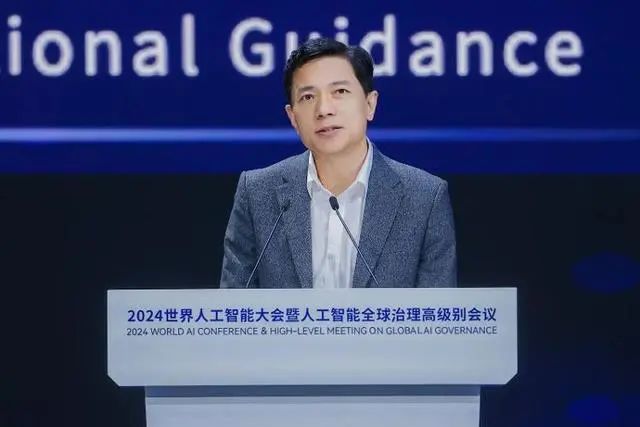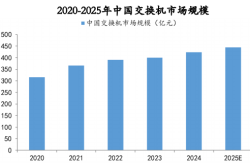China-US AI Battle: Reflection on Strength Behind the Glittering Numbers
![]() 07/08 2024
07/08 2024
![]() 558
558
The 2024 World Artificial Intelligence Conference has just concluded, leaving behind a series of impressive figures: over 300,000 visitors, total online traffic surging to 1.9 billion, intended procurement value reaching RMB 15 billion, 24 major industrial projects signed, with a total investment expected to exceed RMB 40 billion. This grand event brought together 1,300 global leaders, including top award winners and academicians.

However, in the field of computing power, the United States still dominates, particularly in the AI chip market where companies like NVIDIA excel. While China leads in generative AI patent applications, in terms of general AI models like ChatGPT, Chinese enterprises are still aiming to benchmark and surpass the US.
This inevitably prompts deep reflection: is China's strength in AI truly as glorious as the surface numbers suggest? Perhaps, we need a more comprehensive review and assessment.
01
Hundreds of Models Compete, Alibaba Challenges Li Yanhong's "Closed-Source Theory"
At the Shanghai AI Conference, Li Yanhong's "closed-source theory" encountered open opposition from Alibaba.
Li Yanhong argued that model open sourcing is not as straightforward as one might think, where more contributors equal better results. Instead, he believes that in commercial competition, closed-source models are the most competitive. After all, model open sourcing and code open sourcing are two different things and should not be confused. However, he also emphasized that ultimately, it comes down to application. Without application, a basic model, whether open or closed-source, is useless.

On the other hand, Alibaba Cloud CTO Zhou Jingren disagrees. He clearly stated that Alibaba Cloud chooses the path of open sourcing. Two years ago, they decided to open source the Tongyi large model, and now, Tongyi Qianwen has achieved true full-size, full-modal open sourcing, leveling the playing field between open and closed-source models. This is not just talk; the numbers speak for themselves! In the past two months, Tongyi Qianwen's open-source model downloads have doubled, exceeding 20 million. Simultaneously, Alibaba Cloud Bailian's customer base has grown from 90,000 to 230,000, an increase of over 150%!

It's worth noting that Li Yanhong's remarks were made in April this year, suggesting that Alibaba was well-prepared.
It seems that the debate between open and closed-source will continue. But ultimately, it comes down to who can better apply AI large models in practice. After all, application is king! Whether open or closed-source, as long as it maximizes the value of AI large models, it's the best choice. So, let's not rush to take sides; let's wait and see the actual test results!
According to a recent survey report, in the battle of hundreds of models, the first tier is just at a passing level: iFLYTEK Spark, Tongyi Qianwen, and Tencent Yuanbao ranked top three, with the best score of 6.6 out of 10. iFLYTEK Spark ranked first in translation capabilities and had the strongest comprehensive abilities.

02
How Will AI Reshape the Global Economic Landscape? Opportunity or Destruction?
At the 2024 World Artificial Intelligence Conference, Turing Award winner Roger Needham and China Mobile Chairman Yang Jie painted a picture of AI's boundless potential. They predicted that new technologies will bring significant productivity gains, even estimating that global GDP will grow from $100 trillion to an astonishing $1,000 trillion. Such figures undoubtedly fuel excitement for AI's future.
However, across the ocean, the United States sings a different tune. A report by CNN poured cold water on these optimistic projections. Allegedly, a survey commissioned by the US State Department warned that rapidly advancing AI poses a "destructive" risk to humanity. This warning undoubtedly raises doubts: should we really halt progress due to AI's potential risks?
But this is not the case. The power of data lies in revealing the truth and guiding us. While AI's development poses challenges, as Yang Jie said, AI will not replace human intelligence but rather restructure industries and fields. This means that those skilled in using AI will have the opportunity to stand out and become leaders in the new era.
Therefore, facing AI's rapid development, we should not be intimidated by potential "destructive" risks. Instead, we should see the opportunities, embrace new technologies, and learn to leverage AI to enhance our productivity and competitiveness. After all, in the "Internet+" era, those proficient in using computers have set an example for us. Now, it's time to welcome the AI era and make ourselves leaders in this new age.
03
Why Is China's AI Surpassing the US? Behind the "Three Abundances"
When someone mentions that China's AI is stronger than the US, some shake their heads, believing we're clearly 10 years behind, how could we suddenly surpass?
But the truth is fascinating; China's AI has not only caught up but is running fast! When ChatGPT took the world by storm at the end of 2022, China's large models were not just talking about benchmarking and surpassing; they were actually doing it and doing it well.
Look at this battle of hundreds of models; each is vibrant, with large models, computing power, robots, autonomous driving, and new applications emerging endlessly, dazzling us. In contrast, what about Apple, the US's star company? It can't even produce an AI terminal product, and the leader in AI chips relies on China for support. Multiple US AI startups have laid off over 20% of their workforce, with star unicorns desperately seeking "lifesaving funds." Isn't this turnaround surprising?
A report from the World Intellectual Property Organization (WIPO) adds fuel to the fire. From 2014 to 2023, China's generative AI patent applications exceeded 38,000, ranking first globally and six times that of the second-placed US! This is no joke; generative AI encompasses the generation of text, images, audio, video, and more, and we are a genuine patent powerhouse.
At this point, you might ask, why is China's AI so strong? The answer is three words: "three abundances."
First, we don't lack application scenarios. AI phones, AI cars, AI kitchens, AI clothing – AI touches every aspect of our lives. In contrast, the US is constrained by excessive personal privacy protection, making AI applications difficult to implement. Here, we have plenty of applications to choose from and use freely.
Second, we don't lack AI talent, and let the numbers speak. The Global AI Tracking System, published by the Paulson Institute's MacroPolo, shows that as of 2022, China has nearly half (47%) of the world's top AI researchers, up from 29% in 2019. Currently, a significant proportion of the world's top 2% AI researchers are of Chinese origin or work in China. Foreign media like The New York Times have analyzed that China leads in the number of AI talents. Our talent pool is abundant.
Third, we don't lack resources, which is the most important. US giants are struggling with AI's power consumption, calling it a development bottleneck. Here in China, Academy Member Wang Jian said that China generates more electricity annually than the US, Japan, and Russia combined! Electricity? We have nothing to worry about! Look at Tesla's humanoid robot Optimus Gen 2 in the US; it has to be cautious even when picking up an egg for fear of insufficient power. Here, 25 out of 40 intelligent robots are humanoid, all brimming with energy!
So, don't look at China's AI with old eyes anymore. We are an AI powerhouse with the "three abundances." If you don't keep up with the AI trend and learn to use AI, you might be replaced by those who do!








